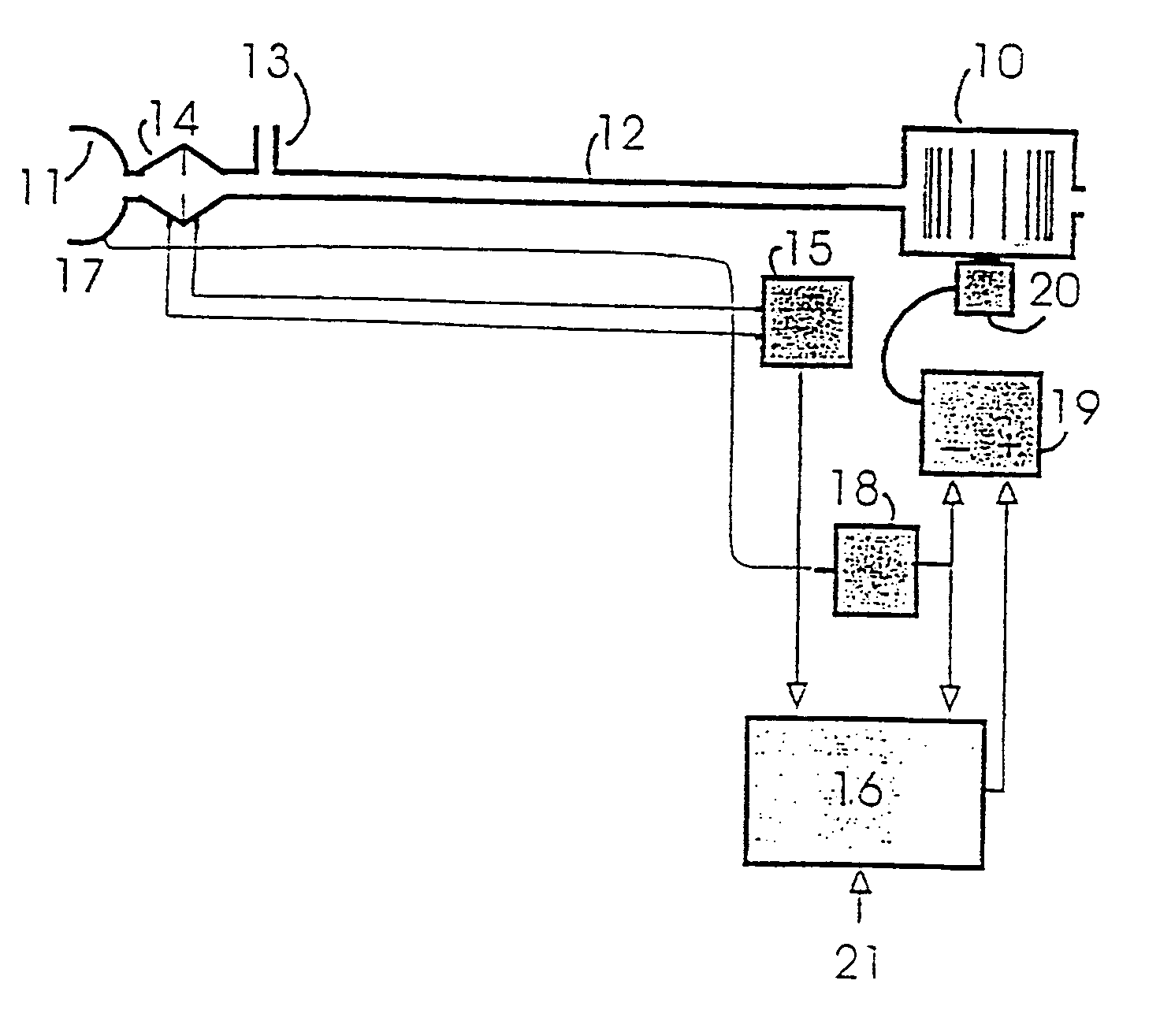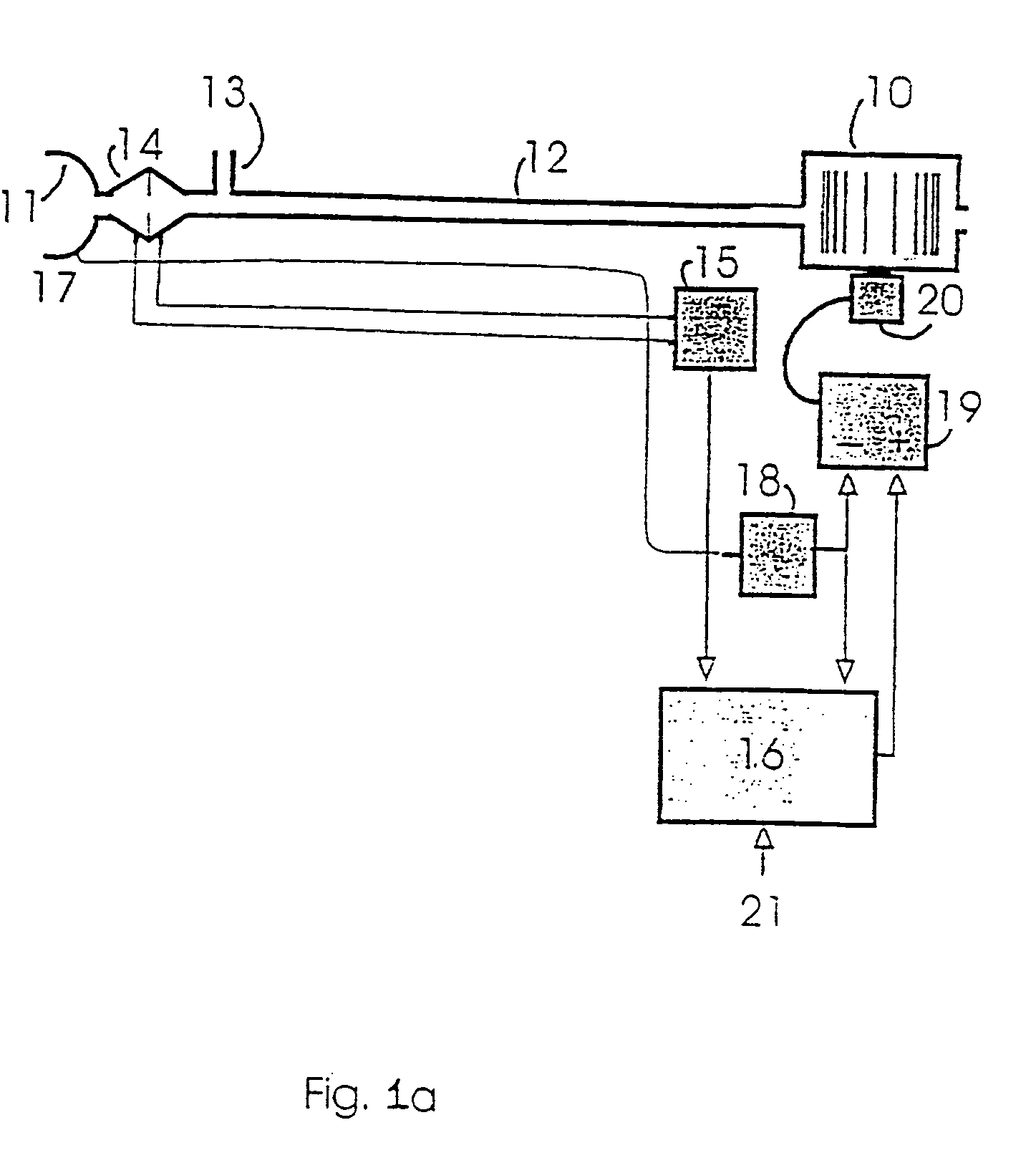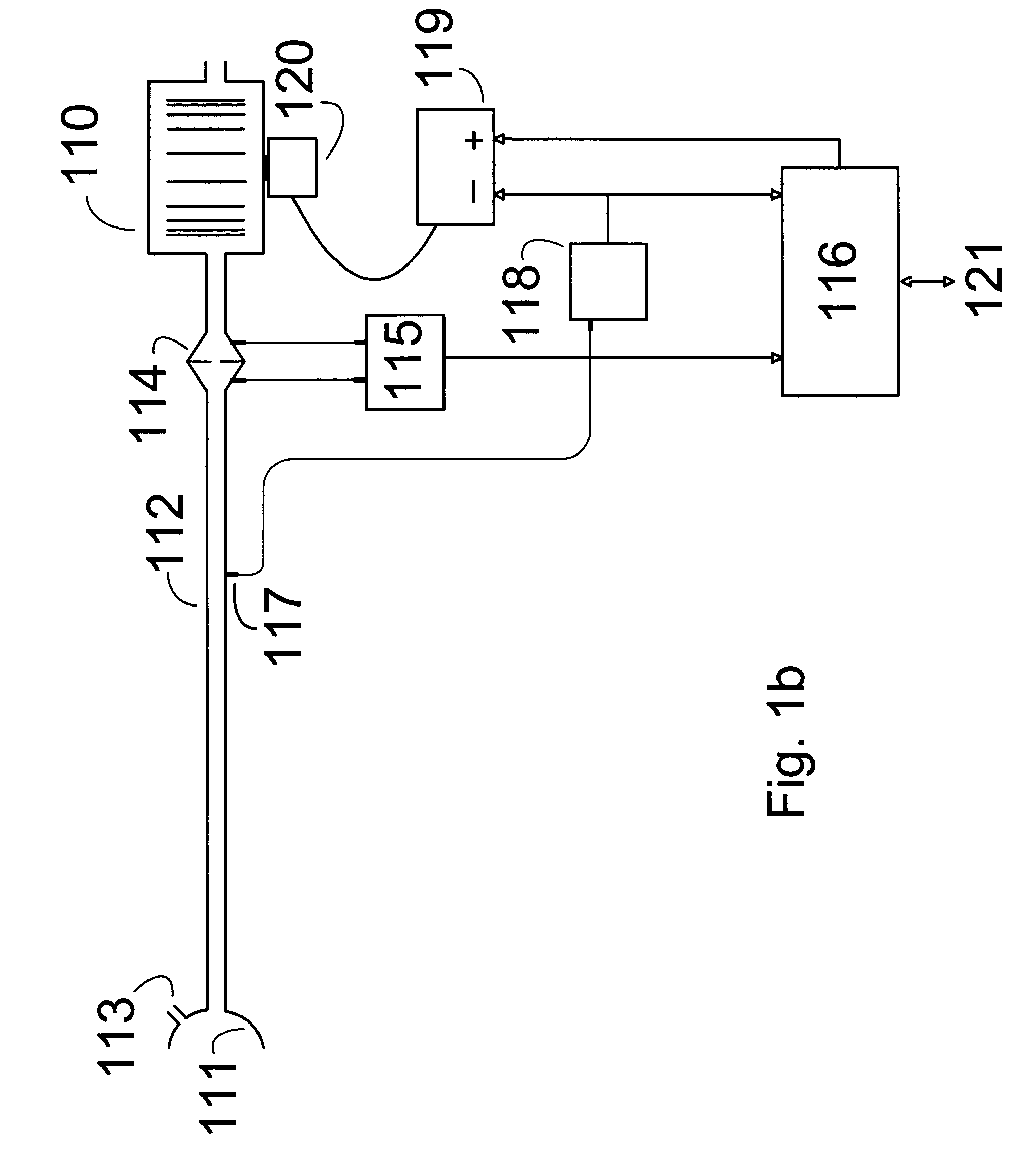Method and apparatus for determining instantaneous inspired volume of a subject during ventilatory assistance
a technology of instantaneous inspired volume and apparatus, which is applied in the direction of application, diagnostic recording/measuring, operating means/releasing devices of valves, etc., can solve the problems of reducing the efficiency of the device, affecting the comfort or panic of patients, and affecting the comfort of patients,
- Summary
- Abstract
- Description
- Claims
- Application Information
AI Technical Summary
Benefits of technology
Problems solved by technology
Method used
Image
Examples
first embodiment
[0132]Apparatus to give effect to a first embodiment of the apparatus is shown in FIG. 1a. A blower 10 supplies a breathable gas to mask 11 in communication with the subject's airway via a delivery tube 12 and exhausted via a exhaust diffuser 13. Airflow to the mask 11 is measured using a pneumotachograph 14 and a differential pressure transducer 15. The mask flow signal from the transducer is then sampled by a microprocessor 16. Mask pressure is measured at the port 17 using a pressure transducer 18. The pressure signal from the transducer 18 is then sampled by the microprocessor 16. The microprocessor 16 sends an instantaneous mask pressure request signal to the servo 19, which compares said pressure request signal with actual pressure signal from the transducer 18 to the control fan motor 20. The processor settings can be adjusted via a serial port 21.
[0133]It is to be understood that the mask could equally be replaced with a tracheotomy tube, endotracheal tube, nasal pillows, or...
PUM
 Login to View More
Login to View More Abstract
Description
Claims
Application Information
 Login to View More
Login to View More - R&D
- Intellectual Property
- Life Sciences
- Materials
- Tech Scout
- Unparalleled Data Quality
- Higher Quality Content
- 60% Fewer Hallucinations
Browse by: Latest US Patents, China's latest patents, Technical Efficacy Thesaurus, Application Domain, Technology Topic, Popular Technical Reports.
© 2025 PatSnap. All rights reserved.Legal|Privacy policy|Modern Slavery Act Transparency Statement|Sitemap|About US| Contact US: help@patsnap.com



